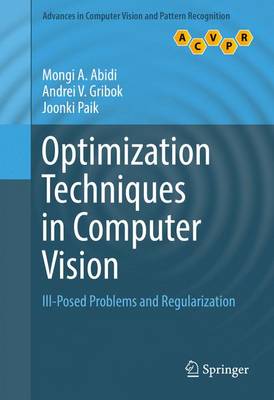Advances in Computer Vision and Pattern Recognition
1 total work
Optimization Techniques in Computer Vision
by Mongi A. Abidi, Andrei V. Gribok, and Joonki Paik
Published 16 December 2016
This book presents practical optimization techniques used in image processing and computer vision problems. Ill-posed problems are introduced and used as examples to show how each type of problem is related to typical image processing and computer vision problems. Unconstrained optimization gives the best solution based on numerical minimization of a single, scalar-valued objective function or cost function. Unconstrained optimization problems have been intensively studied, and many algorithms and tools have been developed to solve them. Most practical optimization problems, however, arise with a set of constraints. Typical examples of constraints include: (i) pre-specified pixel intensity range, (ii) smoothness or correlation with neighboring information, (iii) existence on a certain contour of lines or curves, and (iv) given statistical or spectral characteristics of the solution. Regularized optimization is a special method used to solve a class of constrained optimization problems. The term regularization refers to the transformation of an objective function with constraints into a different objective function, automatically reflecting constraints in the unconstrained minimization process. Because of its simplicity and efficiency, regularized optimization has many application areas, such as image restoration, image reconstruction, optical flow estimation, etc.
Optimization plays a major role in a wide variety of theories for image processing and computer vision. Various optimization techniques are used at different levels for these problems, and this volume summarizes and explains these techniques as applied to image processing and computer vision.
Optimization plays a major role in a wide variety of theories for image processing and computer vision. Various optimization techniques are used at different levels for these problems, and this volume summarizes and explains these techniques as applied to image processing and computer vision.
